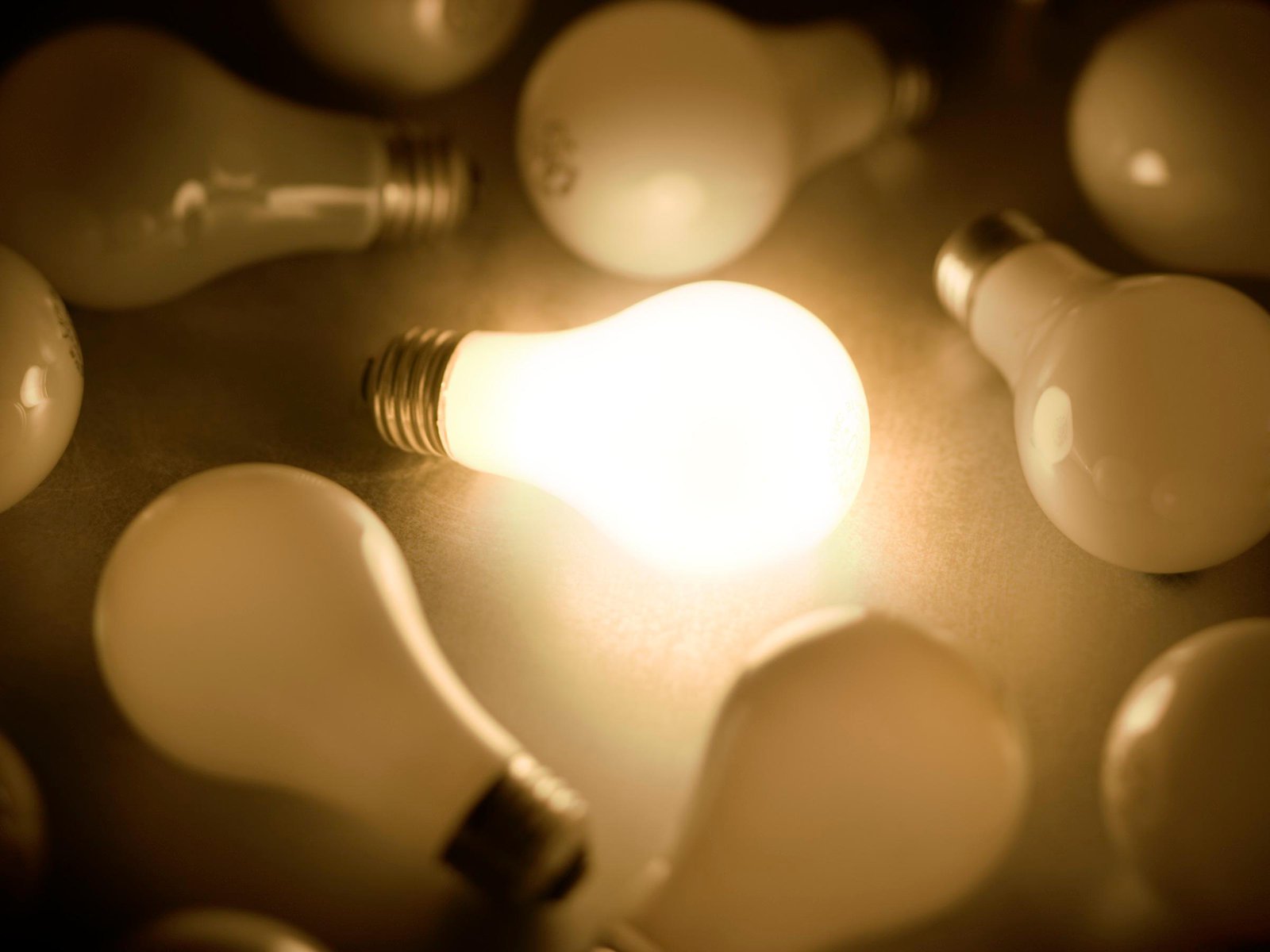Lighted mirrors are a popular addition to many bathrooms, but some people are concerned that they may damage your eyes. In this post, we'll take a look at the science behind lighted mirrors and whether or not they can harm your vision. Besides, we will also compare the difference between LED lamps and ordinary incandescent lamps. And we'll also provide some tips for using them safely in this blog. Read on for more information!

Eye discomfort or pain is the most common symptom of light damage to the eyes. The pain may be sharp or dull and may feel like something is scratching or irritating the eye. Tearing and burning eyes are another 2 common symptoms. The eye may produce more tears than usual, which may sting or burn. Dizziness or vertigo can also be a symptom of light damage to the eyes. The dizziness may make it difficult to stand up or walk, and it may cause nausea or vomiting. Migraine headaches are also a common symptom of light damage to the eyes. The headache may be severe and can last for several hours.
If you are exposed to bright light for extended periods of time, such as when working on a computer or driving, you may be at risk for light damage to the eyes.

There are a few types of light that can be bad for your eyes. One is ultraviolet (UV) light, which is found in sunlight. exposure to UV light can damage the cornea, the clear front part of the eye, and the lens, which is the part of the eye that focuses light. This damage can cause cataracts, a clouding of the lens that can eventually lead to blindness. UV light can also cause macular degeneration, a condition that causes vision loss in the center of the field of vision.
Another type of light that can be harmful to your eyes is blue light. Blue light comes from digital devices like computers, tablets, and cell phones. It can also come from fluorescent lights and LED lights. Prolonged exposure to blue light can damage the retina, the sensitive tissue at the back of the eye that helps to transmit visual signals to the brain. This damage can lead to vision problems like age-related macular degeneration.


While incandescent lights are cheap and easy to find, they are not the best option when it comes to your eyesight. Many people are not aware of the harmful effects that ordinary incandescent lights can have on the eyes. These lights emit a large amount of blue light, which has been shown to damage the retina and cause macular degeneration. In addition, incandescent lights produce a lot of glare, which can cause eye strain and headaches.
While fluorescent and LED lights have largely replaced incandescent bulbs in recent years, there are still many homes and businesses that use these older-style lights. It will still take some time for LED lights to become widespread.

When it comes to LED lights, the first impressions people may have of them are high efficiency, energy efficiency, money saving and long life. But in addition to these advantages, the quality of light produced by LED lights is much better compared to ordinary incandescent lights.
The light produced by some LED lights hardly hurts the eyes. LED lights are available in a range of colors and can provide warm light. Warm light emits a yellowish light, while cooler tones produce a bluer tint, the blue light we mentioned above, which can harm the eyes. What’s more, the warm light from LED lights is also softer and more diffuse, less intense and more friendly to the eyes.
Furthermore, the LED mirror light is still sufficient to provide you with a well-lit reflection when needed. This makes them ideal for applying makeup or shaving without any harsh shadows that can irritate your skin - especially if the color temperature has been adjusted higher so blue light isn't overpowering as much!
So choosing a warm tinted LED light that is not too bright will hardly harm your eyes.

When using your led light of the mirror, be sure to hold it at arm's length. This will help to avoid eye strain and ensure that you are getting an accurate view of your appearance.
When choosing LED lights for your mirror, it is important to select the right color temperature. A cool white light (around 6500K) will provide a bright, clean light that is ideal for applying makeup or shaving. Avoid using blue or white LEDs in mirrors for a long time. The light from these colors can be too harsh and may cause eye strain.
For a softer, more relaxing light, choose a warm white light (around 3000K). It is also important to make sure that the LED lights are dimmable, so you can adjust the light level to suit your needs.
Adjust the brightness of the LED light to suit your needs. Too much light can be overwhelming, and too little light can make it difficult to see your reflection.

Besides, use the LED light for a specific task. Whether you're applying makeup or shaving, make sure that you're only using the light for that particular task. This will help you avoid eye strain and other problems associated with prolonged exposure to bright lights.
Finally, it is important to clean the mirror regularly to remove any build-up of dirt or grime that could cause the light to scatter and cause glare.
By following these tips, you can use your LED lighted mirror in a healthy way that won't cause any problems for your eyesight.
If the light on your bathroom mirror is broken, there are a few things you can do to fix it.
The first thing you should do is turn off the power to the fixture at your circuit breaker.
Then, check the bulb to see if it needs to be replaced. If the bulb is burned out, simply unscrew it and screw in a new one.
Once the power is off, remove the light cover and bulbs. If there is any broken glass, be sure to clean up the area carefully. Next, use a screwdriver to remove the mounting plate from the wall. Once the plate is removed, you will be able to access the wires. Disconnect the wires from the fixture and then remove the entire fixture from the wall. To install the new fixture, start by connecting the wires to the new fixture. Then, hold the fixture in place and use screws to secure it to the wall. Finally, replace the light bulbs and cover. Turn on the power at your circuit breaker and test your new light.

If the socket is loose, tighten it with a screwdriver. However, if the socket is damaged, you will need to replace the entire fixture.
If the problem persists, you may need to replace the entire fixture. To do this, turn off the power to your bathroom at the circuit breaker and remove the old fixture. Then, follow the instructions that come with your new fixture to install it.
With a little bit of effort, you can get your bathroom mirror light working again in no time.
Friendly reminder: If the mirror light appears to be flickering or dimmed and so on, do not accept to use it. You have to deal with it or replace it, otherwise, it is bad for your eyes and will consume electricity.
Not all lighted mirrors damage your eyes. Compared to ordinary incandescent lights, LED lighted mirrors are a better option for your eyes if the color temperature is warm white and you don’t stare at them for an extended period of time. The light from these LEDs will be soft, diffuse lighting that's safer than blue or cool whites.
Of course, the mirror's LED light also needs to be checked and maintained regularly to ensure that your daily use is effective and healthy in the long term.
Mirplus has a long history of research and development in high-quality LED bathroom mirrors and has already attained UL, ETL and CE Certificates. If you need a high-security mirror with light, please contact us for buying or customising high-quality LED bathroom mirrors.
Copyright 2022 - All Mirplusbath